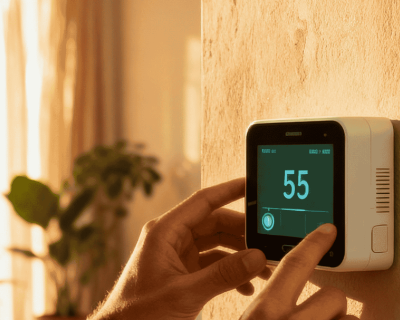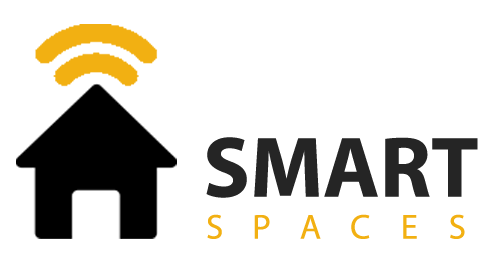-
Phone
-
Email
-
Global Certificate
ISO 9001:2017

How Smart Systems Drive Profitability in Commercial Facilities
In today’s competitive landscape, operating a commercial facility or office space involves a constant balancing act between employee experience, operational efficiency, and the bottom line. The traditional approach—relying on manual controls and isolated systems—is no longer sustainable. The solution lies in the integrated power of smart building automation.
At Smart Spaces Company, we recognize that the most significant advantage of integrating smart systems isn't just convenience; it’s the direct, measurable impact on productivity, performance, energy conservation, and operational costs. Smart infrastructure is not an expense—it is a critical investment in your facility's future profitability.
- The Core Value: Exponentially Increased Productivity and Performance
A smart office is a responsive office. When the physical environment supports the work being done, performance naturally accelerates. Smart systems actively remove environmental distractions and optimize conditions, allowing employees to focus entirely on their tasks.
Dynamic Climate Control: Smart HVAC systems use real-time occupancy data and scheduling to maintain ideal, consistent temperatures. This eliminates the "too hot, too cold" complaints that disrupt focus and waste time. By ensuring thermal comfort, smart systems directly support sustained concentration and cognitive performance.
Optimized Illumination: Advanced smart lighting goes beyond simple dimming. Our systems utilize ambient light sensors and task-specific settings to provide optimal light quality throughout the day. For example, lighting can automatically adjust to minimize glare on screens or subtly shift color temperature to support alertness during peak working hours. A visually comfortable environment reduces eye strain, fatigue, and errors, leading to higher output per employee.
Seamless Meeting Management: Smart systems integrate meeting room scheduling with lighting, display, and presentation setup. When a meeting is scheduled, the room is automatically prepared—lights on, displays activated, and climate adjusted—eliminating the unproductive first five minutes typically spent struggling with technology. This micro-efficiency compounds across the entire workforce.
- Strategic Savings: Time and Energy Conservation
Smart technology fundamentally changes how resources are consumed and managed, leading to dramatic reductions in both energy waste and wasted staff time.
Eliminating "Phantom" Energy Draw: This is the most direct financial benefit. Our Smart Energy Management solutions use advanced occupancy sensors to monitor spaces with precision. If an office, meeting room, or restroom remains empty for a set period, the system automatically powers down non-essential lighting and adjusts climate control settings. This is a critical function in large facilities where manual checks are impractical, ensuring you never pay to condition or light an empty room.
Automated Scheduling and Predictive Maintenance: Manual system checks and adjustments consume valuable staff hours daily. Smart systems handle scheduling automatically and learn usage patterns to optimize consumption predictively. Furthermore, they continuously monitor equipment health (like HVAC units) and can alert facility managers to potential issues before a failure occurs. This shift from reactive repair to proactive maintenance saves significant labor costs and prevents expensive downtime.
Optimized Utility Rates: Smart systems often integrate with utility provider data, allowing the building to automatically reduce energy consumption during periods of peak demand pricing, thereby managing peak-load charges and drastically lowering overall utility expenses.
- Impacting the Bottom Line: Reduced Operating Costs
The combined benefits of increased productivity and strategic resource conservation funnel directly into a reduction in overall operating costs (OpEx).
Extended Equipment Lifespan: By operating HVAC and lighting systems intelligently—running them less frequently and under optimal conditions—smart controls significantly reduce wear and tear. This extends the useful lifespan of expensive capital equipment, delaying costly replacements and lowering depreciation expenses.
Reduced Labor Overhead: By automating routine tasks—such as daily system checks, climate adjustments, and light switching—facility management teams can be optimized. Staff time is reallocated from manual tasks to higher-value activities, further enhancing organizational performance.
Enhanced Property Value: Buildings equipped with high-performance, unified smart systems—like those provided by Smart Spaces Company—are demonstrably more attractive to high-tier tenants and potential buyers. The promise of lower operational costs and a superior working environment translates into higher lease rates and increased asset valuation.
In conclusion, investing in a unified, end-to-end smart system is the strategic imperative for modern commercial entities. It transforms the facility from a passive utility consumer into an active operational partner, guaranteeing a simultaneous lift in employee performance and a substantial decrease in expenditure. The smart building of the future is here, and it’s driven by efficiency, not just connectivity.
